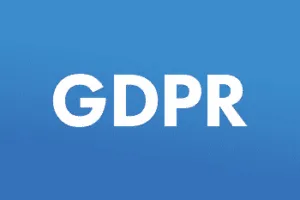It’s among the most common wishes: the ability to predict the future. You’re probably one of the millions to think, “If only I’d invested in stock in 1984 when Apple first became a publicly-traded company!” The power of prediction is something we’ve been dreaming about and attempting throughout history, as evidenced by Nostradamus’ eerily prophetic quatrains in the 1500s.

Predictive analytics take typical mobile app analytics to the next level. They pull from many areas of modern technology, such as traditional stats and user data, data mining/modeling and artificial intelligence. You can leverage predictive analytics to offer user recommendations and forecast the future of your business in order to increase engagement levels, drive sales and make more informed business decisions. In a marketing context, predictive analytics are extremely useful for fine-tuning your sales strategy. Companies are even blending predictive analytics and mobile app technology with the IoT to develop cost-saving preventative maintenance programs.
Predictive Analytics to Make Recommendations and Pinpoint Hot Products For E-Commerce Apps
E-commerce mobile apps can increase sales by monitoring user activity and making recommendations for songs, movies, games, books or other products. Amazon reported a 29 percent increase in sales after integrating product recommendations at multiple points in the browsing and purchasing process.
One Forrester analyst indicated that “Amazon’s conversion to sales of on-site recommendations could be as high as 60% in some cases based off the performance of other e-commerce sites.” And the same dynamic could happen with e-commerce apps. In fact, the impact could be even greater for your app since studies indicate a higher conversion rate when you integrate product recommendations. E-commerce apps perform, on average, 120 percent better than mobile websites and 20 percent better than desktop websites.
Predictive analytics programs gather data on user habits and actual sales to determine which products are gaining momentum. A sophisticated algorithm could even draw from other data sources to identify popularity indicators on e-commerce websites, social media platforms and the web as a whole. Hot products (or soon-to-be-hot products) generate a lot of “buzz.” The algorithm could evaluate all this data to predict which products you should promote and feature in your e-commerce app.
Predicting User Behaviors and Recommending Service Offerings
Service providers, such as banks, are leveraging predictive analytics to identify high-risk areas in terms of fraud or other losses. But with your mobile app, service providers can use analytics data to make recommendations or decisions that increase customer satisfaction, such as:
- Monitoring the customer’s purchases, including the amount, location and frequency.
An algorithm can detect unusual activity and predict potentially fraudulent transactions. The app then asks security questions only the customer would know. This keeps the account secure while helping the customer avoid unnecessary security-related account freezes. - Using a mobile app to communicate with an IoT-enabled vehicle.
Collecting data that can be used to make recommendations for vehicle servicing, maintenance and repairs. The app could offer information on the closest service center and suggestions for when maintenance should be performed. An app could even make general preventative maintenance recommendations for older vehicles that lack the “smarts” of new cars. After all, many maintenance needs, like oil changes and tire rotations, are based on mileage—data that’s easy to gather with basic GPS technology. - Using GPS data to determine which bank branch or ATM is closest to a customer’s office, home or other location.
The app then generates an alert on the next app launch to point the customer to the closest ATM or bank branch. Algorithms can even identify when a customer travels to a further ATM or branch because they didn’t realize there was another one nearby. A “did you know…” alert may be generated in response, delivering a better customer experience. - Using predictive apps in conjunction with monitoring devices to predict a driver’s risk level. The insurance industry is already using in-vehicle monitoring to evaluate driver risk levels, but most insurers use IoT-enabled monitoring pods, which are costly to operate. A less expensive solution is to use a mobile app that gathers and beams out data using the driver’s smartphone. Mobile apps can even collect data from the vehicle (like RPMs, speed and steering and braking data) since most new cars feature Bluetooth and WiFi capabilities. The predictive app sends this in-car data through an algorithm to predict the driver’s risk level in order to ensure the driver pays an insurance rate representative of their actual driving habits.
Insurance apps could also make predictions on which forms of coverage and service recommendations you’d be likely to purchase. For instance, if a predictive app taps into your device’s GPS and browser history, it may see you’ve Googled “dog training tips,” and your GPS indicates you spent two hours at a vet and three hours at a dog park. Based on this information, the insurance app could predict you own a dog and recommend pet insurance.
Of course, this degree of data sharing may exceed some users’ comfort levels. Younger users tend to be more comfortable with information sharing, while older generations are more reluctant to trust technology in this way. You should evaluate what percentage of your user base will actually grant permissions to access the data your predictive analytics interface needs to make accurate recommendations.
Leveraging Predictive Analytics to Identify Trends in Device Usage
Mobile app developers invest a lot of time testing apps to ensure the application performs well on the devices people actually use. Of course, each app’s user base is different, so it’s challenging to predict what new devices and operating system versions to focus on when updating, testing and improving your app’s interface.
Your developer can configure your analytics interface to gather data on each user’s device, hardware and operating system. Based on this information, an algorithm identifies emerging trends and makes predictions. For example, if your predictive analytics indicate 15 percent of user will use a specific device in six months, your development team should ensure your app delivers a smooth user experience on that device.
Predictive analytics are an emerging region of the mobile app development world, so it’s vital that you work with a cutting-edge mobile app development company. Dallas-based 7T deals with all aspects of mobile development, including predictive analytics. Whether you wish to leverage data generated by your app’s users or to tap into the broader Internet of Things, 7T works to understand your unique needs and goals before developing an innovative solution.
7T also maintains offices in Houston and Austin, and in addition to working with local clients, our team accepts clients from across the United States and beyond. We invite you to learn more about our apps and contact us to discuss your project.











